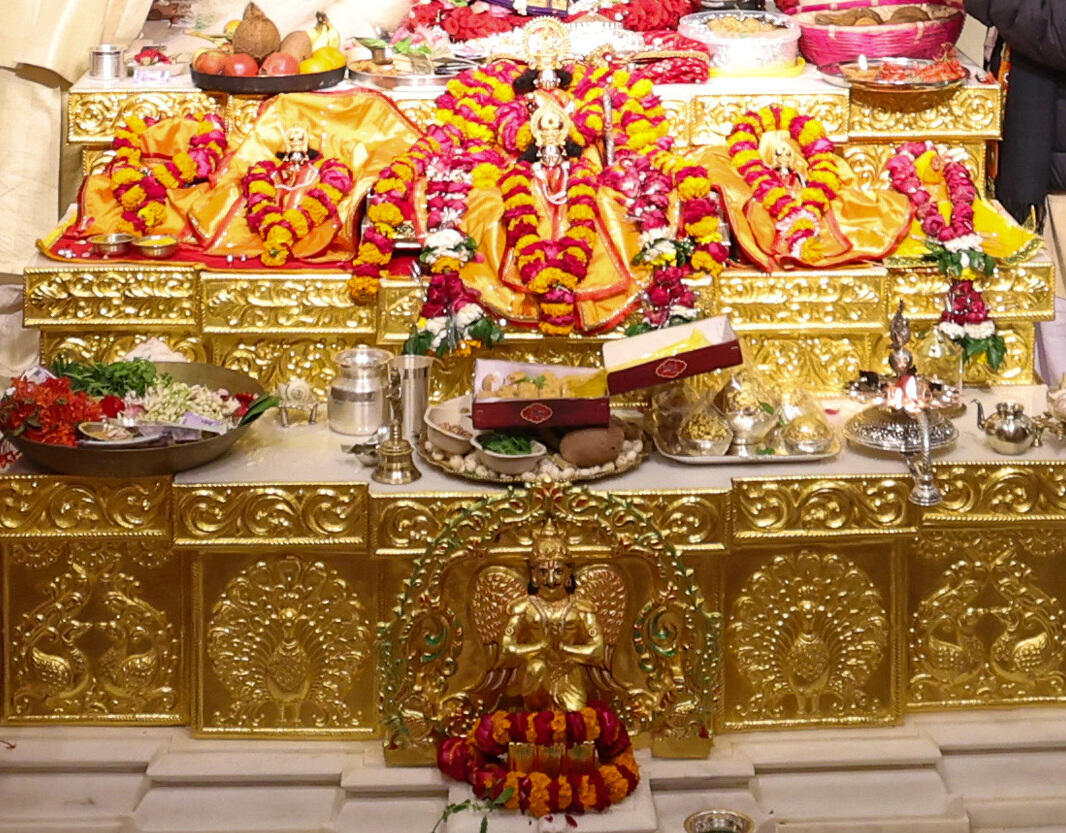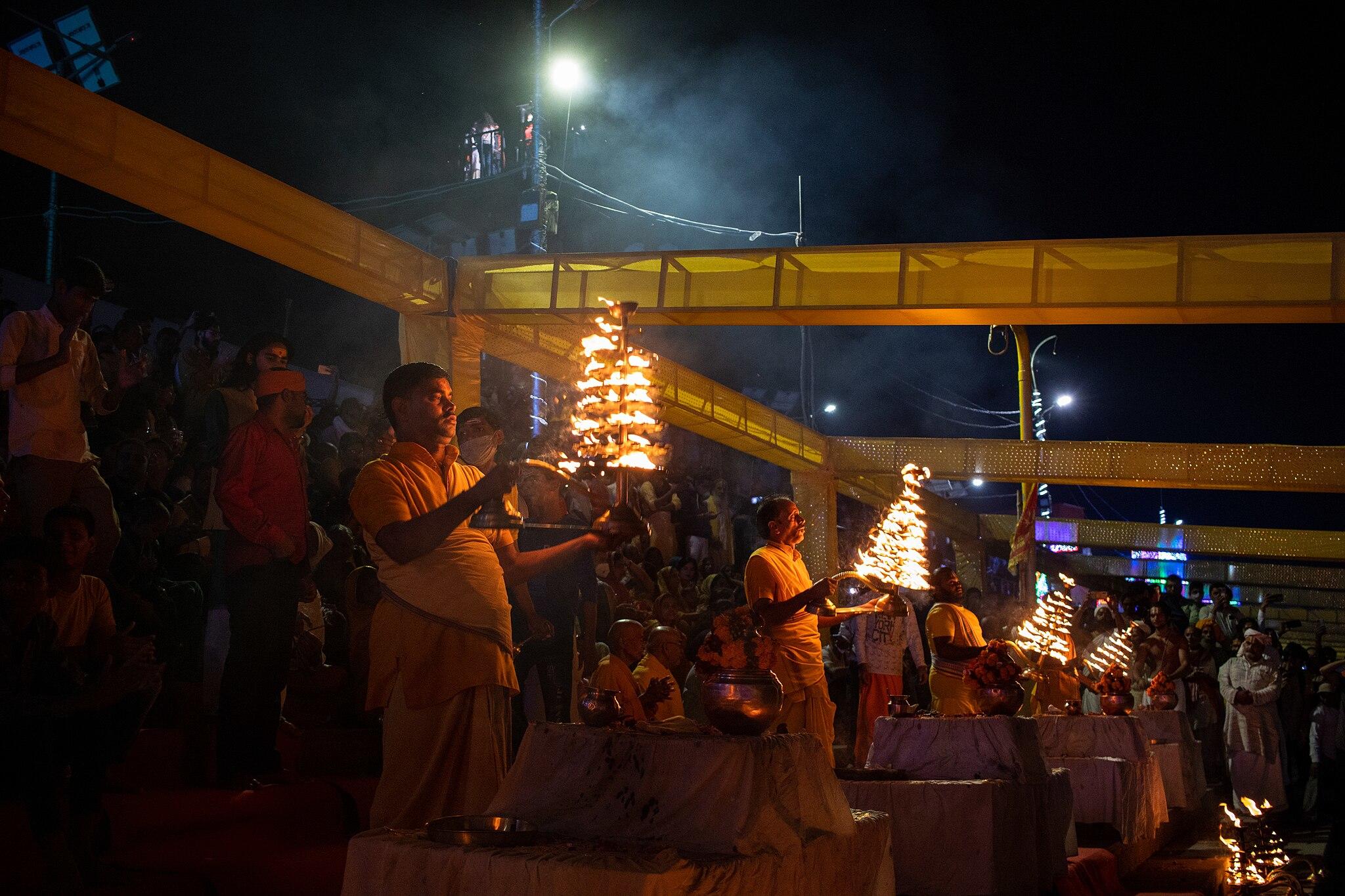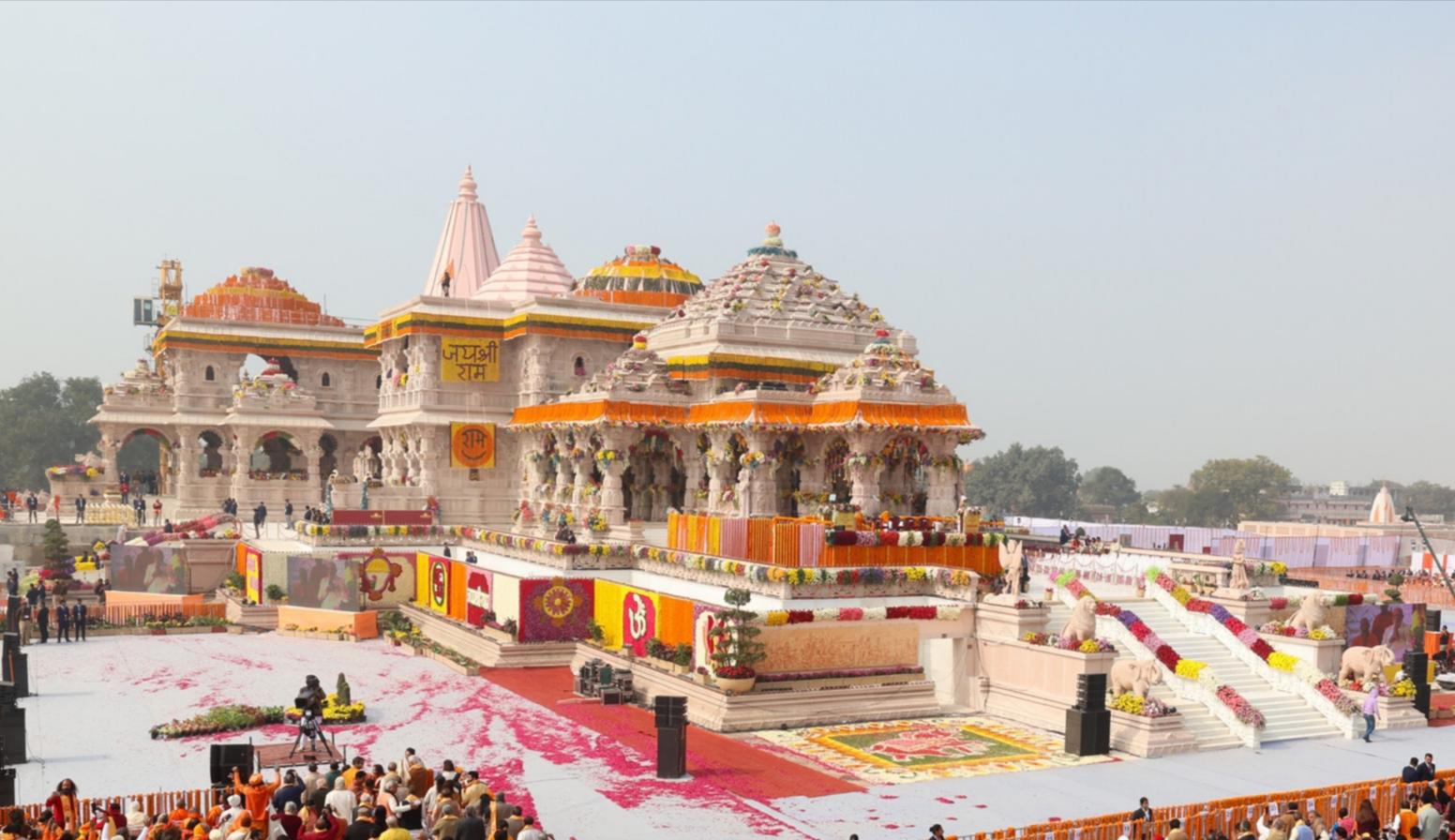Ayodhya is a deeply revered Hindu pilgrimage site, holding a special place in the hearts of millions of devotees around the world. Rich in mythology and history, it is believed to be the birthplace of Lord Rama, the seventh avatar of Lord Vishnu.
Each year, countless devotees travel to Uttar Pradesh to visit Ayodhya, offering their prayers and seeking Lord Rama’s blessings. The city is home to many temples and sacred landmarks, including the revered Ram Janmabhoomi, where the Ram Mandir now stands.
Beyond its religious importance, Ayodhya’s fascinating history and architectural beauty make it an engaging destination for visitors of all creeds. From the magnificent Hanuman Garhi Temple to the captivating Treta Ke Thakur, every corner of the city has a story to share.
Join us in exploring Ayodhya’s rich cultural heritage and uncovering the deep-rooted traditions that make it one of Hinduism’s most cherished pilgrimage sites.

Historical and Mythological Significance of Ayodhya
Ayodhya has a deep-rooted historical and mythological significance that dates back thousands of years. According to Hindu mythology, Ayodhya was established by Manu, the first man on Earth, and was ruled by the Ikshvaku dynasty. It was in Ayodhya that Lord Rama, an avatar of Lord Vishnu, was born to King Dasharatha and Queen Kaushalya.
Ayodhya holds great significance as a pilgrimage site for Hindus. A verse in the Brahmanda Purana includes Ayodhya in the list of "the most sacred and foremost cities", along with Mathura, Haridvara, Kashi, Kanchi, and Avantika.
This verse can also be found in other Puranas with minor differences. According to the Garuda Purana, Ayodhya is one of the seven holiest places for Hindus in India, with Varanasi being the most revered.
The term "Ayodhya" is a derivative of the Sanskrit word yudh, which means "to fight or wage war". So, "yodhya" means "to be fought," in the literal translation. But, the more accurate translation is "invincible." This interpretation is supported by the Atharvaveda, which uses it to describe the unconquerable city of gods. The ninth-century Jain poem Adi Purana also affirms that Ayodhya "does not exist by name alone but by the merit" of being unconquerable by enemies. Another interpretation by Satyopakhyana suggests that it means "that which cannot be conquered by sins" (instead of enemies).
"Saketa" is the earlier name for the city, found in Sanskrit, Jain, Buddhist, Greek, and Chinese sources. According to Vaman Shivram Apte, the word "Saketa" is derived from the Sanskrit words "Saha" (with) and "Aketen" (houses or buildings). The Adi Purana states that Ayodhya was called Saketa "because of its magnificent buildings which had significant banners as their arms". Hans T. Bakker suggests that the word may be derived from the roots "as" and "ketu" ("with banner"); the variant name Saketu is mentioned in the Vishnu Purana.
Ayodhya was identified as the capital of the ancient Kosala kingdom in the Ramayana. At that time, the city was called "Kosala." The Adi Purana states that Ayodhya is renowned as su-kośala "because of its prosperity and good skill".

Ayodhya in the Ramayana
The epic Ramayana, written by sage Valmiki, describes Ayodhya in Hindu mythology as a prosperous and opulent city. Lord Rama's reign in Ayodhya is often regarded as the "Ram Rajya," a period of ideal governance marked by peace, prosperity, and righteousness. The Ramayana narrates the story of Lord Rama's exile, his battles against the demon king Ravana to save Sita (Rama’s wife), and his eventual return to Ayodhya to reclaim his rightful place as the king.
Ramayana is divided into seven books or sections, known as "kandas." It is in the second kanda, Ayodhyakanda, that Lord Rama is exiled and Sita is abducted. The final kanda, Uttarakanda, tells of Lord Rama’s return to Ayodhya and the subsequent events.
The Importance of Ayodhya for Hindu Rites
Ayodhya's association with Lord Rama has made it one of the most revered pilgrimage sites in Hinduism. Devotees from all over the world visit Ayodhya to seek the blessings of Lord Rama and immerse themselves in the spiritual ambience of the city.
Ayodhya is so holy in Hindu spirituality that it is one of the Mokshdayani Sapt Puri sites; seven pilgrimage cities that must be visited to help one attain moksha. The six other cities are Mathura, Haridwar, Varanasi, Kanchipuram, Ujjain, and Dwarka.
The Ram Janmabhoomi, believed to be the birthplace of Lord Rama, is the most significant pilgrimage site in Ayodhya. For centuries, devotees have flocked to this sacred spot, offering prayers and seeking solace. The recent construction of the Ram Mandir on the Ram Janmabhoomi site has further enhanced its religious importance, drawing millions of pilgrims every year.
Apart from the Ram Janmabhoomi, Ayodhya is home to numerous temples dedicated to Lord Rama and other deities. The Hanuman Garhi Temple, located atop a hill, is a prominent pilgrimage spot that attracts devotees seeking the blessings of Lord Hanuman. The Treta Ke Thakur, a temple believed to have been built during Lord Rama's time, is another revered site in Ayodhya.
Festivals and Rituals Celebrated in Ayodhya
Hinduism celebrates dozens of festivals over the course of the year, and festivities tend to be more emphasized in significant places, like Ayodhya.
The top three festivals to attend in Ayodhya are:
- Ram Navami: Celebrated on Lord Rama's birthday, this festival involves grand processions, bhajans, and religious rituals.
- Diwali: Ayodhya is known as the birthplace of Lord Rama, and Diwali celebrates his return to the city after defeating Ravana. The entire city is illuminated, and fireworks light up the night sky in a celebration of Deepotsav.
- Kartik Purnima: This festival is celebrated with great fervor in Ayodhya, with devotees taking holy dips in the Sarayu River and participating in religious ceremonies.
The cities of Ayutthaya in Thailand and Yogyakarta in Indonesia are named after Ayodhya.
The Complicated History of Ayodhya
Ayodhya’s importance goes beyond its mention in religious texts. Historical records suggest that it was once the capital of the ancient Kosala Kingdom and played a key role as a thriving center for trade and learning. Over the centuries, the city saw the influence of various dynasties, including the Mauryas, Guptas, and Mughals, each contributing to the city's rich and diverse cultural heritage.
Some scholars even believe that Ayodhya might have been known as Saketa in ancient times—the very place where Buddha is said to have spent part of his life. This adds yet another fascinating layer to Ayodhya’s long and storied past, making it not just a sacred pilgrimage site but also a historical treasure trove.
Where is Ayodhya?
Known as the "City of Ram," Ayodhya is located in the state of Uttar Pradesh, India, and is situated on the banks of the Sarayu River. This ancient city is a treasure trove of religious and cultural heritage, attracting pilgrims and history enthusiasts alike.

Tensions Between Hindus and Muslims
The history of Ayodhya is also marked by a long-standing dispute over the Ram Janmabhoomi site. The dispute centered around the ownership of the land where the Babri Masjid mosque (possibly built in 1528–29 (935 AH) by Mir Baqi) stood, which was believed to have been constructed on the ruins of an ancient temple dedicated to Lord Rama. Archaeological findings conclude that there was, in fact, an older structure under Babri Masjid that was not an Islamic structure, but it’s not clear what the structure was or that it was demolished for the construction of the mosque.
The Ayodhya dispute created significant tensions between Hindu and Muslim communities for several decades. The issue reached its peak in 1992 when the Babri Masjid was demolished by Hindu activists, sparking communal riots across the country.
The matter was investigated by the Liberhan Commission task force. In 2010, the Allahabad High Court ruled that the 2.77 acres of land where the mosque once stood should be split evenly between the Sunni Wakf Board, Nirmohi Akhara, and Ram Lalla Virajman.
However, in 2019 the Indian Supreme Court ruled differently, declaring instead that the entire area should be granted to a Hindu trust so a temple could be built, and the Uttar Pradesh Sunni Central Waqf Board could instead receive 2 acres of land in the Dhannipur village of Ayodhya.
The resulting construction of the Ram Mandir in Ayodhya has been hailed as a historic moment for Hindus worldwide. It symbolizes the culmination of a centuries-old dream and, in Hindu tradition, the restoration of Lord Rama's birthplace.
While a great event for Hindus, the continued strife over the land continues to increase tensions between the Hindu and Muslim communities.
Learn the Hindi language with Hindi tutors nearby or online with Superprof.
Ram Mandir - The Pride of Hinduism in 2024
After the 2019 court ruling, plans to build a grand temple came underway. Finally, in 2024, the new Ram Mandir aka Lord Shri Ram Temple was opened. As of writing this article, it is unfinished, but it’s predicted to be completed by June 2025.
After hundreds of years of unrest from the Hindu population about the mosque’s construction on the holy site, and after the violent destruction of the temple during the riots (which led to the deaths of thousands of people in the resulting Muslim/Hindu conflicts in Mumbai), finally, the important religious and spiritual structure was inaugurated.

Modern Hindu History - The Ayodhya Ram Mandir
The Ram Mandir has become the embodiment of “Jai Shree Ram.” In the 1980s, the Vishwa Hindu Parishad began collecting funds and making bricks with the mantra imprinted on them. In 1989, they laid these stones just outside the existing Babri Masjid as a Shilanyas, where they constructed the singhdwar of a temple foundation. This is the site of the December 1992 riots, where karsevaks came to perform their seva, before things quickly turned violent and the mosque was attacked.
27 years later, the land was granted by the Indian government back to the Hindus for the construction of the Ram Mandir, which had been in the planning stages since 1988.
Ram Mandir in Ayodhya Measurements
(250 ft)
(380 ft)
(161 ft)
The temple was designed by the Sompura family, who refreshed the design in 2020 is the Third-Largest Hindu Temple in The World.
It features mandirs for Surya, Bhagwati, Ganesh, Shiv, Annapurna, and Hanuman.
The idol of Ram Lalla in the garbhagriha was carved from two 60-million-year-old Shaligram rocks from the Gandaki River in Nepal, sent over as a gift from Nepali congress leader Bimalendra Nidhi in January 2023.
The auspicious date of 22 January 2024 saw many religious ceremonies performed along the Ram Van Gaman Path as specified in Ramayana, and the day was declared a public holiday by the Indian government. At 12:15 PM, Prime Minister Narendra Modi performed the Prana Pratishtha of Ram Lalla idol.
As a result of the opening of Ram Mandir, Uttar Pradesh has seen its GDP soar, surpassing Tamil Nadu. It’s estimated that the site will see about 50 million visitors seeking darshan per year - perhaps even more pilgrims than Mecca and the Vatican! - adding about four trillion Indian rupees to the state’s economy and providing many opportunities for more jobs in the area as tourism becomes popular.
Ayodhya is a city with a rich history, serving as the home for traditional historic events and modern-day happenings. It’s sure to be an important site in years to come as well!
Discover online spoken Hindi classes here on Superprof!















